Rush skeletonweed identification and control
Information about the noxious weed rush skeletonweed. Rush skeletonweed is also known by its scientific name, Chondrillla juncea.
About this weed
Rush skeletonweed is a regulated Class B noxious weed in King County. This means control is required in King County under the state noxious weed law.
Rush skeletonweed is known as Chondrilla juncea and it is in the aster family. Its other common names include gum succory, devil’s grass, or nakedweed.
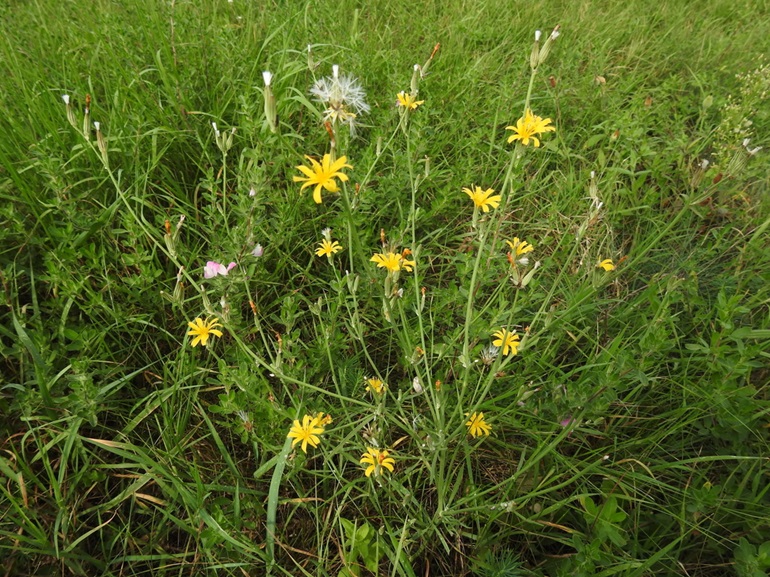
Why it's a problem
A native to Eurasia, rush skeletonweed currently infests several millions of acres of rangeland, cropland, rights of way and waste areas. Thriving in these places, it uses a lot of water and nitrogen that is no longer available to native plants in that area. As a result, it can severely reduce crop yield and forage for livestock and wildlife, and its wiry branches interfere with harvest. It is not yet widespread in King County but has started to expand throughout the region.
Plant description
Rush skeletonweed is a perennial (plants that have a 2+ year life cycle) with many branched, wiry, and rigid stems that range from 1 to 4 feet tall. The stem’s bottom portion is covered with stiff, golden-reddish, and downward pointing hairs. The plant has a milky liquid that oozes out when the plant is damaged.
The stem leaves are alternate (grow staggered along stem not nose-to-nose) and narrow. They grow up to 4 inches long. The leaves will die off as the plant produces flowers giving the plant a bare, skeleton like appearance. The lower leaves resemble common dandelion and are hairless with deep, irregular teeth that point back toward the leaf base. These leaves grow up to 5 inches long.
Rush skeletonweed has small yellow flowers and feathery seeds that ride the wind. The flower heads are a half inch across and will produce seeds without fertilization. Flowering usually occurs late summer. The seeds are small, brown, tapered at both ends, and have fluffy white tufts that grow outward from seed connections. First year plants can produce 50 to 150 flower heads annually, equating 500 to 1,500 seeds per plant. Older plants can produce 20,000 seeds annually.
It thrives in well-drained sandy or gravelly soils and has invaded extensive areas of shallow silt loam soils in other areas as well. In addition to deep (8+ feet) taproots, it has rhizomes (root system that spreads outwards and can grow new stems) that produce daughter rosettes. Plants also grow from buds on root fragments cut by cultivation or other equipment.
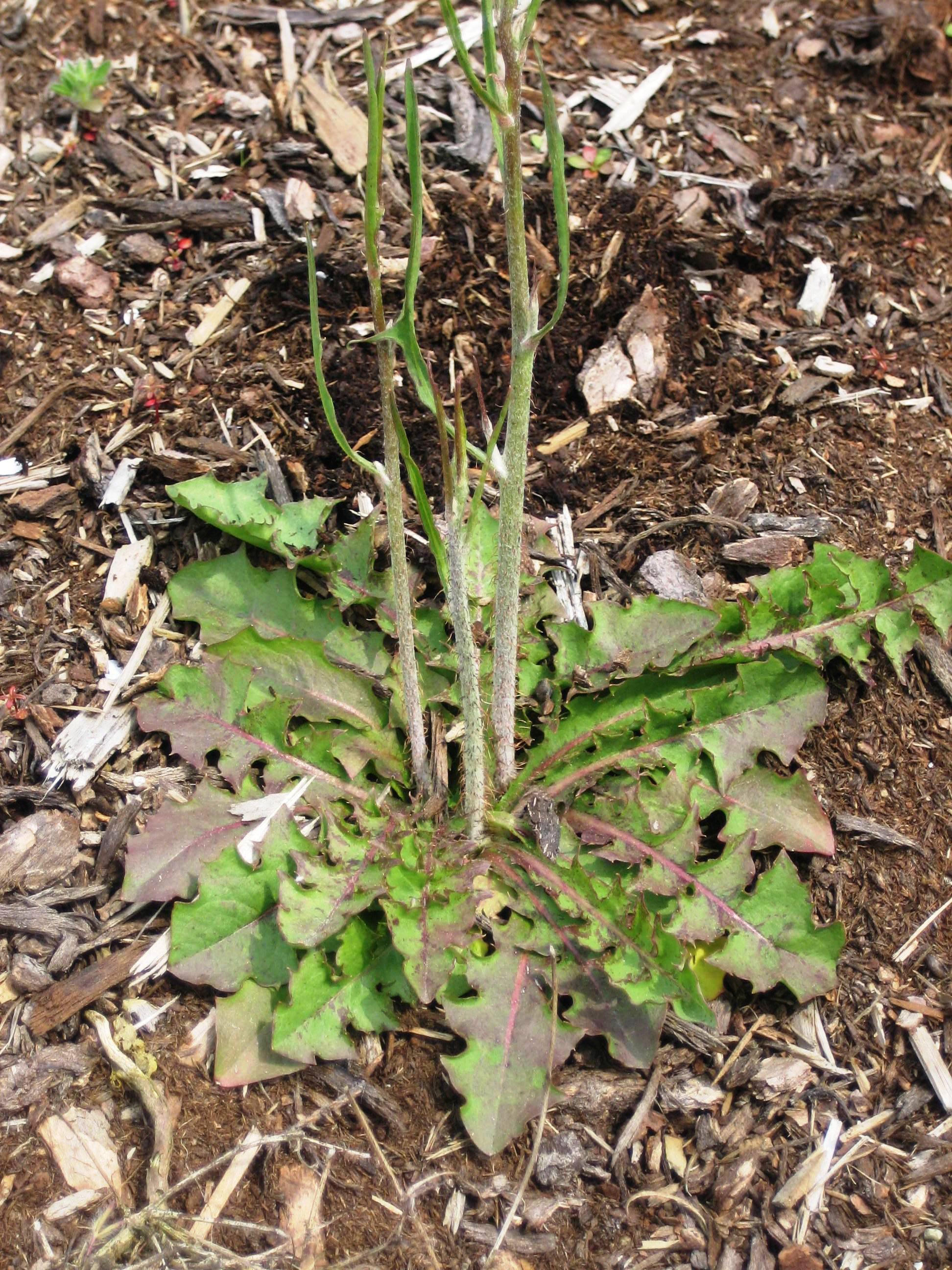
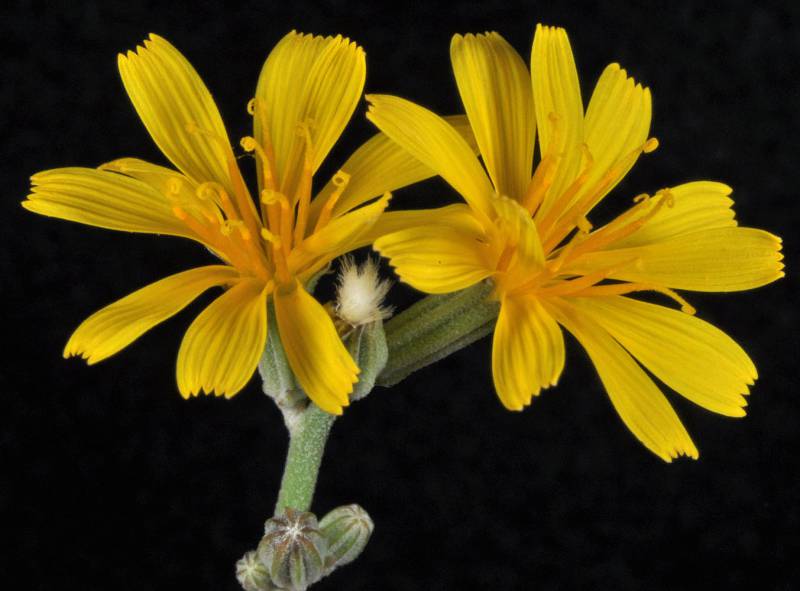
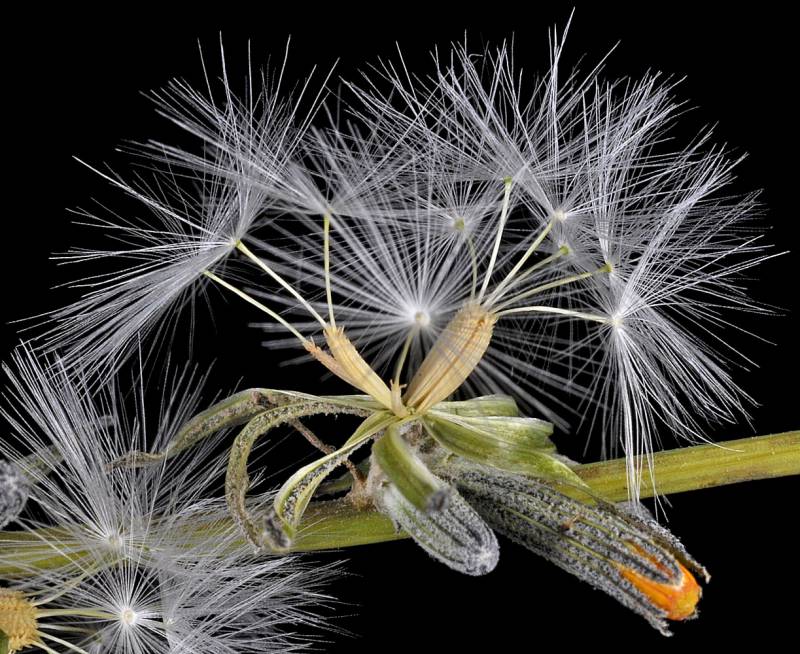

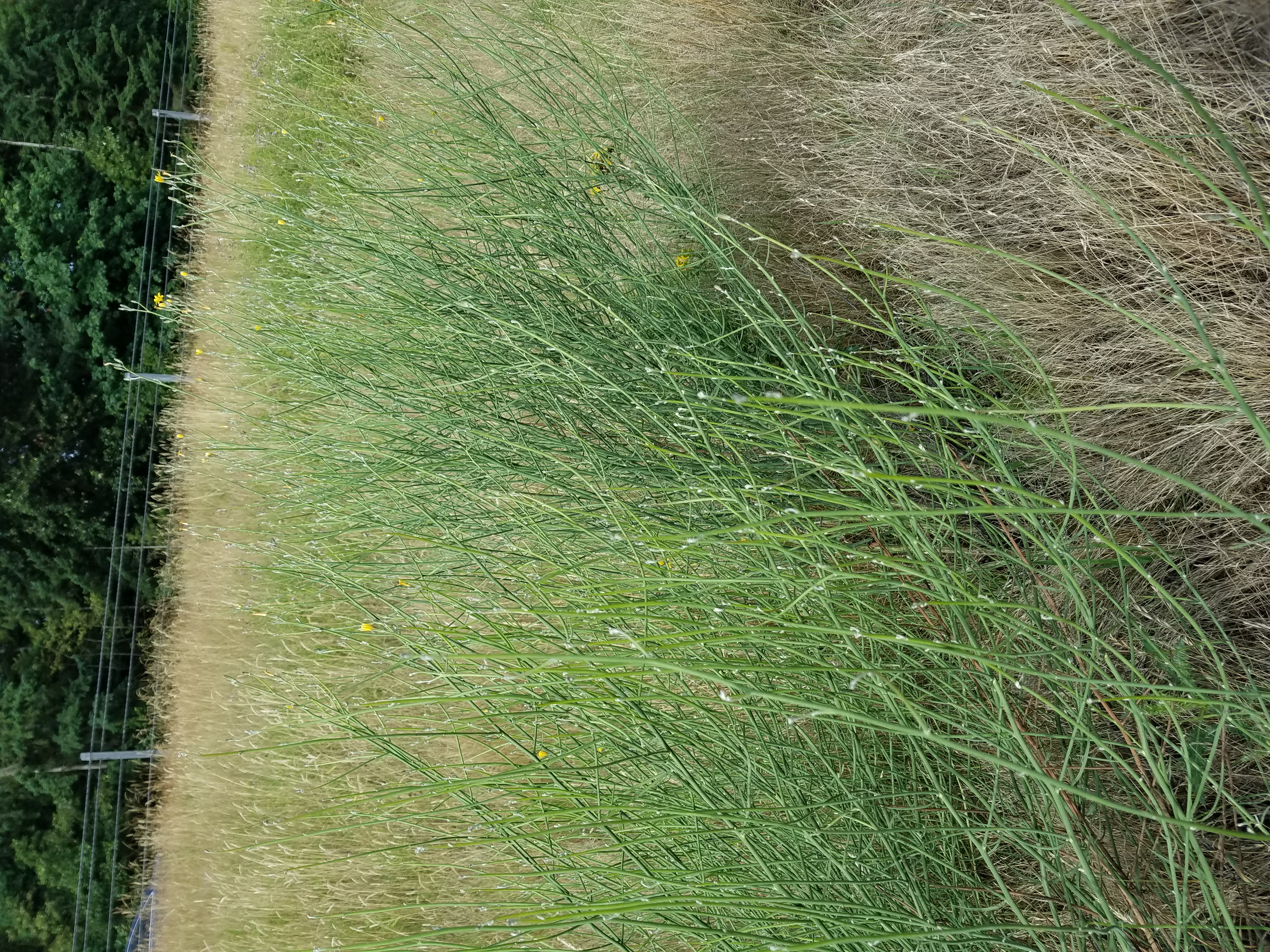
Be aware of look-alike plants
The aster family has several look-alikes to rush skeletonweed:
- Chicory (Cichorium intybus) has similar features but the florets are blue and it does not have the stiff downward pointing hairs at the bottom of the stem.
- The common dandelion (Taraxacum officinale) has similar lobed leaves and the milky liquid but the flower heads are much larger. The stems are also unbranched and hallow and leafless, unlike the rush skeletonweed.
- The prickly lettuce (Lactuca serriola) has similar leaves, stems, small flower heads, and milky liquid but prickly lettuce leaves have more jagged margins. Prickly lettuce also has stiff hairs all along the stem and on leaf undersides.
- The native rush skeletonplant (Lygodesmia juncea) has lavender flower heads instead of yellow.
For more help in identification, the North American Invasive Species Management Association (NAISMA) has fact sheets that describe the ecology, plant description, and potential lookalikes of rush skeletonweed and other plants.
What to do if you find it
Because this plant is not yet widespread in King County, property owners are required to control rush skeletonweed on lands that they manage. Please notify us if you see rush skeletonweed growing in King County. Our program staff can provide the property owner or appropriate public agency with site-specific advice on how best to remove it. We map all known locations of regulated noxious weeds such as rush skeletonweed to help us and others locate new infestations in time to control them.
Control methods
We recommend using a combination of methods to control noxious weeds. In areas with few weeds, it is important to act quickly before they become harder to control. Make a long-term plan as it often takes several years to get rid of most weeds. Start in the least infested areas first and then move into more heavily infested areas.
Prevention
Seeds can be carried on shoes and vehicles, so special care should be taken to clean off after entering areas infested with this plant. It spreads very effectively via broken root fragments so do not till soil with rush skeletonweed growing in it.
Manual control
For new or small infestations, hand pulling two to three times a year (as plants re-appear) for several years can be effective. This will be most effective on newer infestations that haven’t had a chance to develop large root systems or a seed bank. Removal of the tap roots is easiest when soil is damp. Dig out plants with a shovel or hand tools.
In large/well established infestations, manual controls alone will take a lot of time and resources, and may not be effective as plants re-grow from fragments and seeds left in the soil (larger/longer infests have more of this).
Mechanical control
Repeated mowing can decrease biomass and seed production but will likely not eradicate the weed. Tilling is not recommended as the plant can reproduce from root fragments and tilling may produce more. Burning is also not recommend as multiple iterations are needed and multiple burnings in one season is unsafe and damaging to the ecosystem.
Cultural control
Maintain healthy pastures and prevent bare spots caused by overgrazing. Re-seed with verified native or non-invasive grasses. Note: re-seeding and other cultural control methods will not work on their own in established infestations, and should be used only in combination with other methods or as a preventative measure.
Chemical control
Herbicide is most effective when the plant is in the rosette stage (before tall stems form), though they can be hard to find before the plant starts flowering. Fall is the most successful time to use herbicide when the weather has started cooling.
See the PNW Pest Management Handbook for the most up to date and specific method for chemical control of rush skeletonweed.
Stay safe when using herbicide:
- Always read the label before use.
- Wear a long-sleeved shirt, long pants, shoes, and eye protection.
- Follow state and local regulations.
For more information or a site-specific control recommendation in King County, contact the noxious weed program. For information in other counties in Washington state, contact your local weed board or your local cooperative extension office.
Biocontrol
There has been some success at suppression but not eradication of rush skeletonweed using biocontrol. Rush skeleton gall midge (Cystiphora schmidti), rush skeleton gall mite (Eriophyes chondrillae), and the rush skeleton rust fungus (Puccinia chondrillina) have all been used in Washington as biological control. Refer to the North American Invasive Species Management Association (NAISMA) biocontrol fact sheets for more information.
Disposal instructions
Bag the roots and seeds and dispose of them properly. The rest of the plant you may compost.
Washington State Noxious Weed Control Board pamphlet on noxious weed disposal

 Translate
Translate